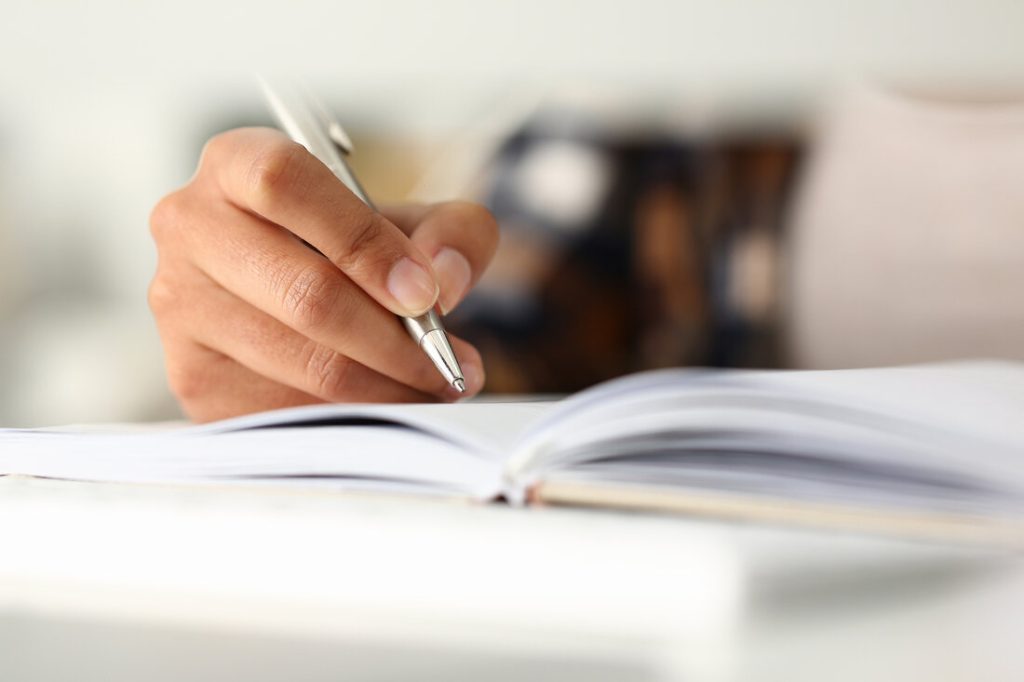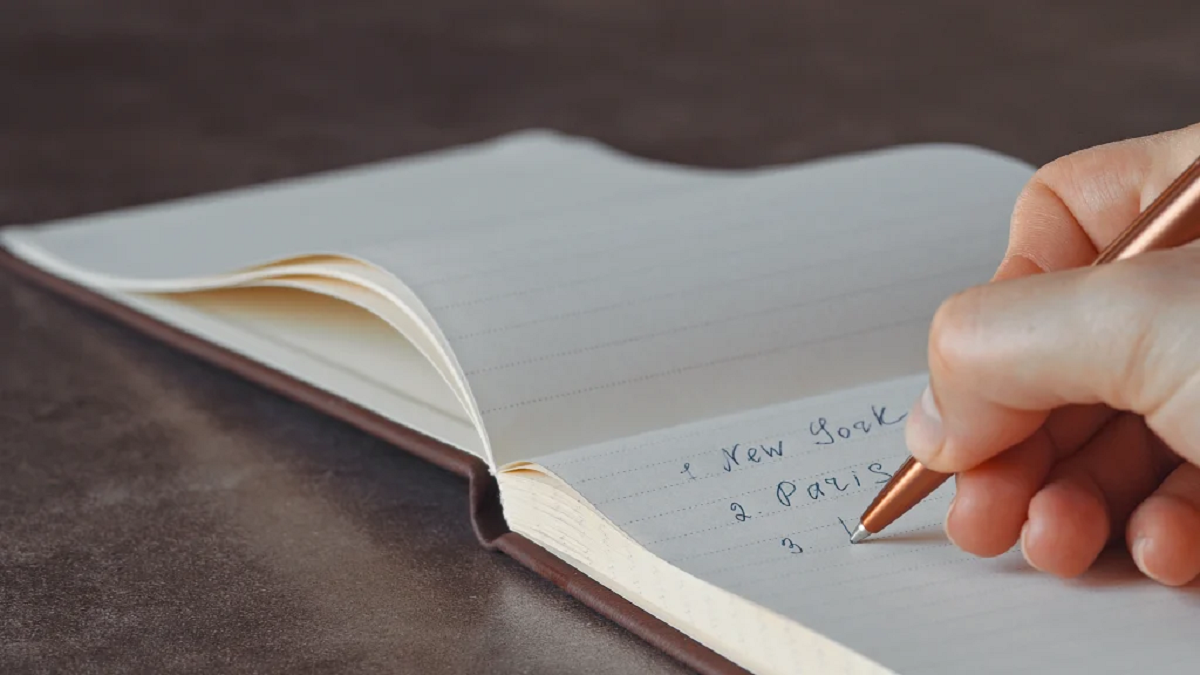Handwriting may seem like a lost art in the digital age we live in. But it still matters a lot in many facets of life, from establishing a lasting impression in the workplace to engaging in artistic expression. Whether you want to improve your handwriting for fun or as a professional, there are tips to improve your handwriting.
In an increasingly digital world, legible handwriting not only enhances communication but also demonstrates grace and attention to detail. Accept the process of honing your penmanship and relish the voyage of discovering an ageless craft.
How To Improve Your Handwriting

1. Understand the Basics of Good Handwriting
Before diving into specific techniques as tips to improve your handwriting, it’s crucial to understand the fundamentals of good handwriting. Good handwriting is generally characterized by:
- Legibility: Each letter should be clear and easily recognizable.
- Consistency: The size, shape, and slant of letters should be uniform throughout your writing.
- Spacing: Adequate spacing between letters and words enhances readability.
Take a moment to assess your current handwriting. Identify which areas need improvement and set specific goals based on those observations.
2. Choose the Right Tools
Your tools can significantly impact handwriting quality. Consider the following when selecting writing instruments:
- Pens and Pencils: Choose a pen or pencil that feels comfortable. Gel pens, fountain pens, and mechanical pencils often provide a smoother writing experience.
- Paper Quality: The type of paper can also influence your writing. Experiment with different textures and weights to find what works best for you.
- Grip: Ensure that your pen or pencil is comfortable to hold. You may want to use grips or ergonomic writing tools to alleviate strain.
Investing in quality writing tools can enhance your writing experience and encourage you to practice more often. It is one of the best tips to improve your handwriting.
3. Practice Basic Strokes
One of the strategies to develop handwriting begins with mastering basic strokes. Spend some time practicing individual strokes to build muscle memory. Focus on:
- Straight Lines: Practice drawing vertical, horizontal, and diagonal lines.
- Curves: Work on smooth curves, both clockwise and counterclockwise.
- Loops: Practice making loops for letters like “p,” “e,” and “g.”
Set aside a few minutes each day to practice these strokes. Over time, you’ll notice improvements in your overall handwriting.
4. Focus on Letter Formation
Once you’re comfortable with basic strokes, move on to individual letters. Observe the formation of each letter. Consider the following:
- Uppercase vs. Lowercase: Understand the differences in formation between uppercase and lowercase letters. Spend time practicing both.
- Consistency: Aim for a consistent size and style. This means keeping the same height for letters like “a” and “b.”
- Connection: If you write in cursive, practice how letters connect. Ensure that your transitions are smooth and fluid.
Use handwriting worksheets or printable templates to guide your practice. Over time, this will help you develop a more cohesive handwriting style.
5. Experiment with Different Styles
There are various handwriting styles and tips to improve your handwriting, from print to cursive to more artistic forms. Don’t hesitate to experiment with different styles to find one that resonates with you. Consider these points:
- Print: A simple and clear style, ideal for everyday use.
- Cursive: A flowing, connected style that can add elegance to your writing.
- Calligraphy: A more artistic and decorative form of writing that can be rewarding to learn.
By experimenting with different styles, you can find one that feels natural and comfortable. This exploration can also make handwriting practice more enjoyable.
6. Maintain a Proper Posture and Grip
Your posture and grip play a significant role in handwriting quality. Focus on the following:
- Posture: Sit up straight with your feet flat on the floor. Maintain a relaxed stance with your arms at a comfortable angle.
- Grip: Hold your pen or pencil lightly but securely. Avoid gripping too tightly, as this can lead to fatigue and affect your writing control.
By maintaining good posture and grip, you’ll find it easier to write legibly and for extended periods without discomfort.
7. Slow Down and Be Mindful
In our fast-paced world, it’s easy to rush through writing tasks. However, taking your time is one of the great strategies to develop handwriting. Consider these tips:
- Mindfulness: Focus on each letter and word as you write. Being mindful of your movements will help improve your precision.
- Pacing: Start slowly to build accuracy, and gradually increase your speed as you become more comfortable with the letters.
Practicing mindfulness in your writing can lead to better results and a more enjoyable writing experience.
8. Create a Practice Routine
Consistency is key to improving your handwriting. Establishing a practice routine can help reinforce your skills. Consider the following:
- Daily Practice: Dedicate a specific amount of time each day to handwriting practice. Even 10-15 minutes can yield significant improvements over time.
- Variety of Exercises: Incorporate various exercises, such as copying passages from books, writing journal entries, or creating custom worksheets.
- Track Progress: Keep a handwriting journal to document your progress. Periodically review your writing to identify areas for improvement.
A structured practice routine will help you develop your skills and make handwriting improvement a habit.
9. Seek Feedback and Adjust
Finally, seeking feedback can be invaluable in your handwriting improvement journey. Share your writing with friends, family, or even teachers to gain insights. Consider these tips:
- Constructive Criticism: Ask for specific feedback on aspects like legibility, consistency, and overall style. This can help you identify areas for improvement.
- Adapt and Adjust: Be open to making changes based on feedback. Over time, minor modifications might result in major advancements.
Remember, handwriting is a personal expression, and finding your unique style may take time. Don’t be discouraged by setbacks; instead, embrace them as opportunities for growth.
The Brief History of Handwriting
Handwriting has a rich and fascinating history that reflects the evolution of communication and culture throughout the ages, which can offer tips to improve your handwriting. The practice dates back to ancient civilizations, where early humans used symbols and pictographs to convey information.
The earliest known forms of writing emerged around 3200 BCE in Mesopotamia with cuneiform, a system that used wedge-shaped marks on clay tablets. Similarly, ancient Egyptians developed hieroglyphics, a combination of logographic and alphabetic elements.
As societies advanced, so did writing systems. The Phoenicians, around 1200 BCE, created one of the first alphabets, which significantly influenced subsequent scripts, including Greek and Latin. This transition from pictorial symbols to phonetic alphabets laid the groundwork for more efficient writing. In the Middle Ages, handwriting became a crucial skill for scribes, who meticulously copied texts by hand.
Monasteries were key centers for this practice, where monks dedicated their lives to transcribing religious texts and preserving knowledge. The use of quills, made from bird feathers, allowed for greater finesse and variation in writing styles. This era also saw the development of distinct scripts, such as Carolingian minuscule, which improved readability and became foundational for modern Latin scripts.
The Renaissance marked a pivotal moment in handwriting history with the emergence of humanist scripts, which emphasized clarity and elegance. This period also saw the rise of calligraphy as an art form, with influential figures like Ludovico degli Arrighi promoting decorative styles that blended functionality with aesthetics.
The invention of the printing press in the 15th century revolutionized written communication, leading to a decline in the necessity for handwriting in mass texts. However, the skill remained vital for personal correspondence and artistic expression. In the 19th century, the introduction of copperplate and Spencerian scripts exemplified the ongoing evolution of handwriting styles, focusing on fluidity and grace.
FAQ
Q: Who has the best handwriting in the world?
A: A young girl from Nepal named Prakriti Malla is renowned for possessing some of the world’s best handwriting. In honor of the United Arab Emirates’ 51st Spirit of the Union, she received the World Best Handwriting Award.
Q: Is it true that handwriting shows personality?
A: The study of handwriting is called graphology. Perhaps surprisingly, modern psychology considers graphology to be a joke; in fact, a group of US researchers published the influential book 50 Great Myths of Popular Psychology, which included the myth that our handwriting discloses our personality qualities.
Q: Which handwriting is best for students?
A: In general, novices and small children find it easier. Easily understood and readable. Frequently thought to be more readable, particularly for beginning authors and readers.











